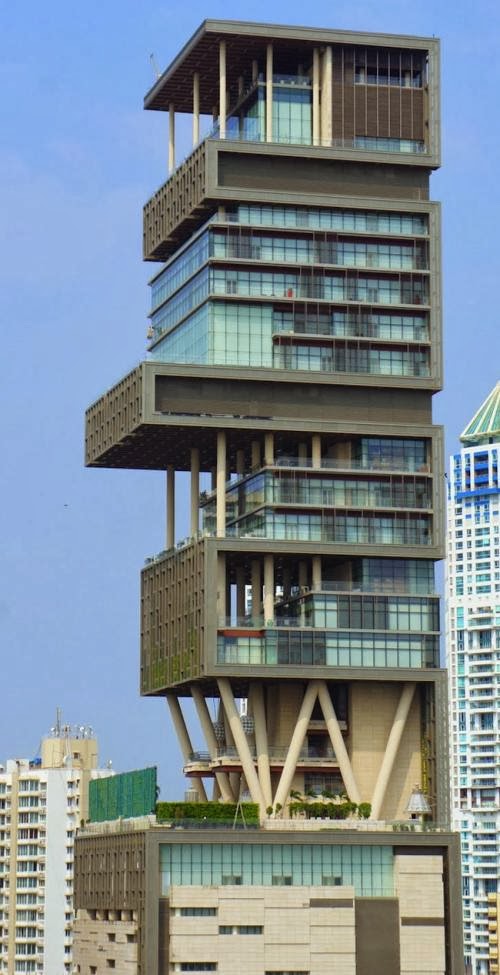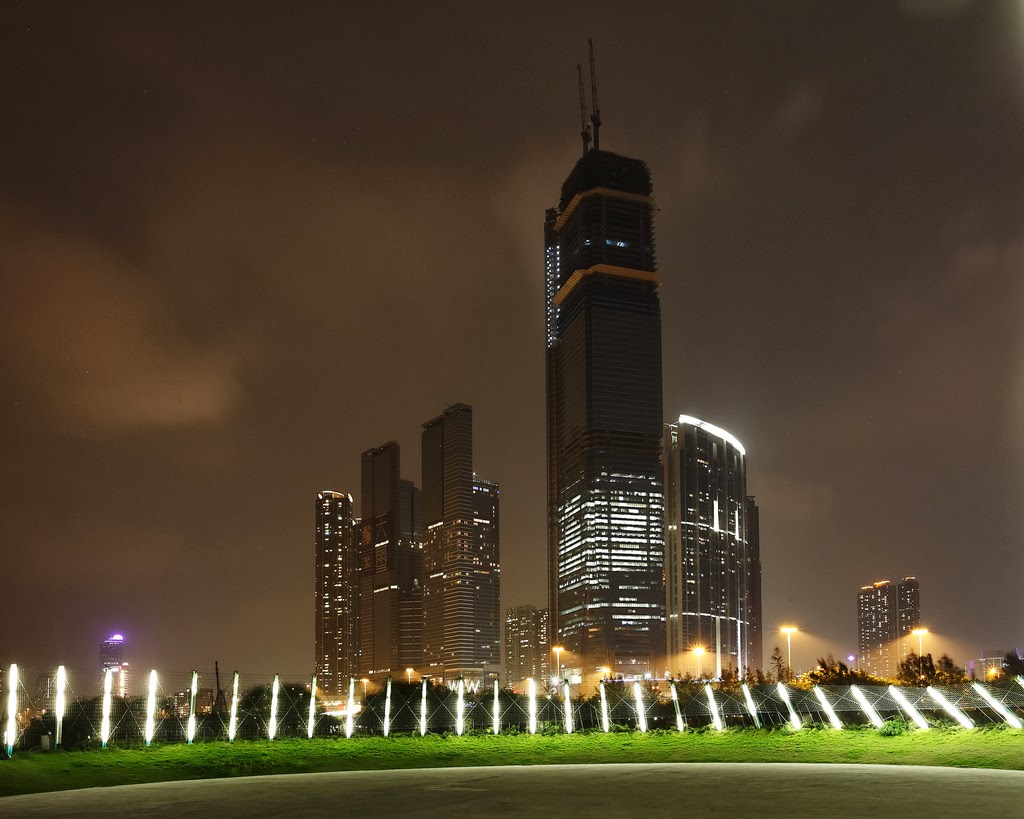By: Sumita Roy
Owning a house is a dream come true for most people. We tend to choose houses that reflect our personality. Houses also manifest the wealth, power, status and lifestyle that we have. In India there are a few business tycoons who have constructed homes suited to their style. Apart from the luxurious amenities, facilities and tremendous cash flow, these houses have features that are completely and entirely unique.
In this country there is, on one hand, a huge proportion of people purchasing moderate homes and paying EMIs for as long as 20 years. On the other, there are many industrial magnates who own the most expensive homes in and around the country. Let us take a peep at the most expensive homes owned by super successful CEOs of India.
Mukesh Ambani’s Antilia:
The Chairman of Reliance Industries resides in the most expensive home on earth, with his wife and children. It is situated in Mumbai’s Tony Altamount Road. The amount spent on building this has been estimated to be $1 billion. It spreads over an area of 400,000 square feet and has 27 storeys. But since some of the ceilings are of double-height, the height can be estimated to the size of a 40-storey building.
Antilia is featured with a multi-storey garage providing space for 168 cars, a health spa, multiple swimming pools, a yoga studio, nine elevators in the lobby, a floor for vehicle maintenance facility, three helipads, a ballroom, a 50-seater movie theater and lush green hanging gardens. Inside two design motifs- the sun and the lotus- have been repeated throughout the mansion in rare materials like crystal, marble and mother-of-pearl. It is named after a mythic island in the Atlantic Ocean.
Ratan Tata’s Colaba Mansion:
 The ex-chairman of the Tata Group owns a spectacular and elegant sea-facing mansion set in Colaba, Mumbai. The edifice comprises of three stories that is separated into 7 levels. It stands erect in a huge area of 13350 sq ft. It has parking area for about 10-12 cars. It stands unpretentious and simple in its appearance.
The ex-chairman of the Tata Group owns a spectacular and elegant sea-facing mansion set in Colaba, Mumbai. The edifice comprises of three stories that is separated into 7 levels. It stands erect in a huge area of 13350 sq ft. It has parking area for about 10-12 cars. It stands unpretentious and simple in its appearance.
The third floor’s second level features swimming pool and sun deck. The third floor of the bungalow houses a gym along with a bedroom in its first level. A media room is also present in this infrastructure. There are private places like bedrooms and living rooms, all located on the 2nd floor along with a library. The ground floor has a kitchen, a living room, bedroom and study.
Vijay Mallya’s White House in the Sky:
‘The King of Good Times’ has a new address at Kingfisher Towers- Residences. It sits over an area of one acre. It is split into two levels. It has a built up area of around 40,000sqft. It has a wine cellar, an indoor heated pool, an outdoor infinity pool, a gym, a salon and a spa. The roof of the penthouse will also have a helipad.
Underneath his residence are the residential apartments for billionaires. There is a clubhouse and garden on the 5th floor; a similar sized swimming pool on the 10th floor; a badminton court on the 15th floor; and a party hall and terrace garden on the 25th floor. A common garden area for all the residents of 25,000sqft is also present.
Singhania’s Mansion, JK House:
JK house is the name of the 30-storied Singhania Mansion located in Breach Candy, South Mumbai. It is owned by Gautam Singhania, Chairman and Managing Director of the Raymond Group. The billionaire family lives in this spectacular structure which is 145 meters high. It offers a panoramic view of the sea and has ultra luxury features like six levels of car parking, private swimming pool, gymnasium with spa, helipad, sprawling living apartments for each family member and a museum floor that includes a jade collection by the Singhanias.
Lakshmi Mittal’s Kensington Palace Gardens:
Lakshmi Mittal, the Chairman and CEO of Arcelor Mittal, resides in Kensington Palace Gardens, also known as London’s ‘billionaire’s row’, with neighbors like Roman Abramovich and Len Blavatnik, who are tagged as richer than the Indian business ace. It is a palatial penthouse apartment in the most expensive residential area of UK.
Hinduja brother’s John Nash:
 Hinduja Brothers have spent 100 million Euros on a palatial property near Queen Elizabeth’s iconic Buckingham Palace. It was bought in a dilapidated condition from the British monarch in 2006. The Brothers have reportedly spent heavily to restore this John Nash mansion.
Hinduja Brothers have spent 100 million Euros on a palatial property near Queen Elizabeth’s iconic Buckingham Palace. It was bought in a dilapidated condition from the British monarch in 2006. The Brothers have reportedly spent heavily to restore this John Nash mansion.
The property sprawls over 70,000 square feet. It is divided into four different apartments, one for each brother. This six-story palace is reported to be the U.K.’s largest Grade One-listed historic abode. In total it has fifty large and spacious rooms that are divided into four spacious segments. This mammoth mansion has a swimming pool and a cinema hall.
Navin Jindal’s bungalow in Delhi’s Lutyens Zone:
Industrialist turned politician, Naveen Jindal owns an expensive heritage bungalow whose estimated cost can be amounted to Rs. 150 Crores. The prices of the properties in this area have raised eight fold in the last decade. The zone also houses bungalows of other famous industrial grandees like Sunil Mittal, KP Singh, and LN Mittal.
Vikram Chatwal's Manhattan Bachelor Pad:
Vikram Chatwal, a well known hotelier, who was referred to as “larger than life” in the Wall Street Journal has an apartment in Manhattan, New York. He bought it for $6 million in 2010 and further invested an amount of $2 million furnishing it. He had employed the services of talents like Hilary Swank's decorator Mark Zeff to imbue a modern, white Gwathmey Siegel-designed box with a "turn-of-the-century feel."
On one floor he has a "wall of self-realization" where he keeps his framed picture clippings "as well as photographs with him and his father with heads of state like Bill Clinton.” There is also a unique mirrored wall with built-in TVs inspired by the sleekness of Chatwal's "150-foot yacht, Fathom."
Thus, the presence of such luxurious residences of Indian tycoons gives our country a truly diversified hue. They also add a feature of exquisite luxury to the Indian real estate market.


















